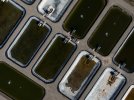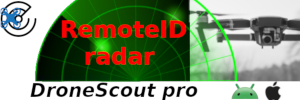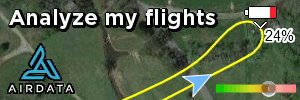A.I. would also like to include the following.........
1. Drones are considered a direct threat
Many animals perceive the sudden noise, shadow, and movement of a drone as a predator. Even at 1,000 feet, the sound can cause enough distress to disrupt critical life functions such as breeding, nesting, and raising young.
2. Harassment is illegal
The U.S. Fish and Wildlife Service strictly prohibits drone use in national wildlife refuges. Harassing wildlife is a serious offense punishable by fines and other penalties. Disturbing protected species like eagles is illegal under the Bald and Golden Eagle Protection Act.
3. Noise and disturbance still occur at high altitudes
- Acoustic footprint: While less intense than at lower altitudes, drone noise can still travel and disturb sensitive species that rely on a quiet environment. For instance, marine mammals, which have acute hearing, can be disturbed by drone noise from a significant distance.
- Behavioral changes: Animals can be spooked even when they don't see the drone. Deer, for example, rely heavily on their hearing and may be confused and stressed by a drone's buzzing, even at high altitudes.
4. Nest abandonment and trampling
A significant threat posed by drones is causing animals to flee in a panic. For nesting birds, this can be catastrophic. If an adult bird is scared off its nest, its eggs and chicks are left vulnerable to predators or die from exposure. In 2021, an illegally operated drone crashed at the Bolsa Chica Ecological Reserve, causing 3,000 Elegant Terns to abandon their nests and 2,000 eggs.
5. Official regulations advise against it
Even for manned aircraft, the Federal Aviation Administration (FAA) recommends flying at a minimum altitude of 2,000 feet over noise-sensitive areas like wildlife refuges. This is a request to avoid noise disturbance and reduce the risk of mid-air collisions with birds, which are more common under 1,000 feet. The FAA's stance reinforces that altitudes lower than 2,000 feet are not considered safe for these environments.
6. "Safe distance" is a subjective judgment
A drone operator cannot reliably determine a "safe" altitude or distance, as different species have varying sensitivities and responses to threats. As a U.S. Forest Service official states, if an animal notices you or your drone, you are too close. Relying on a specific altitude to guarantee safety is therefore unreliable and dangerous.
P.S.
Nothing in these statements has been redacted or changed by me.
Thanx...
P.S.S. I am not sure what background you have as a scientist but conclusions require details and proof not assumptions..
You have assumed what altitude is safe.
I have proven that not to be so......Sorry I am not a right fighter. I simply state the facts as I know and see them.
You may believe these organizations have no authority over their airspace. I will tell you that the FAA works closely with land management to create laws that protect wildlife and follows
their advice when making regulations that involve airspace over certain areas of the country. This is backed up by the statement above that reads.......
"The FAA's stance reinforces that altitudes lower than 2,000 feet are not considered safe for these environments."











